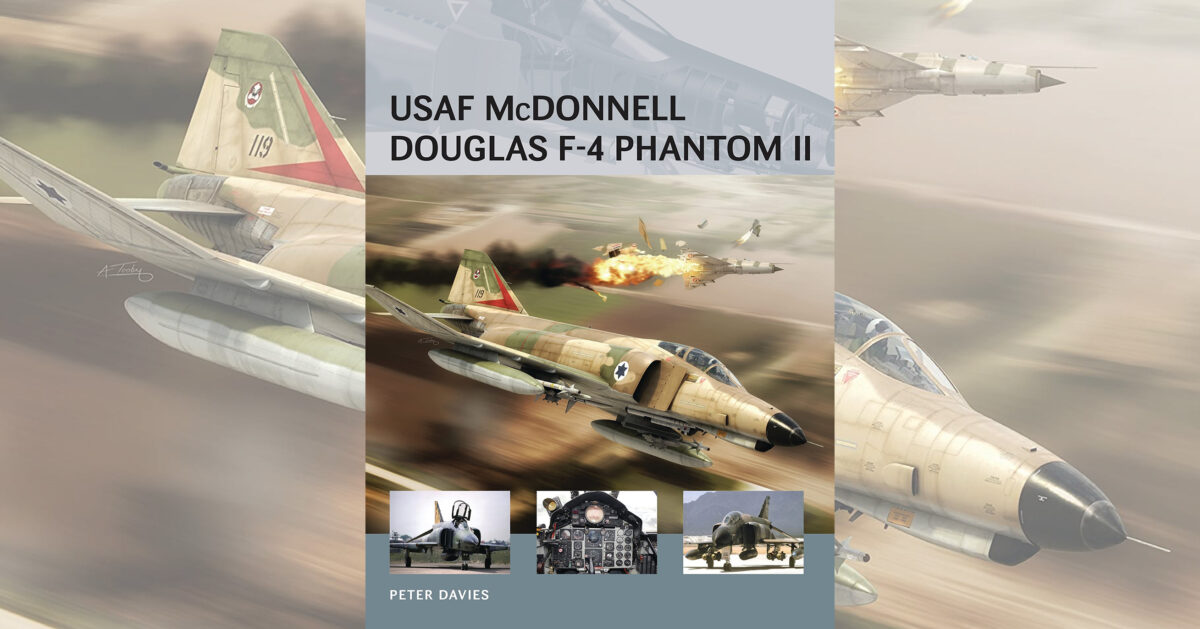USAF McDonnell Douglas F-4 Phantom II by Peter Davies, Osprey Publishing, 2013
The F4H-1 Phantom II was originally designed for the U.S. Navy, and when it first emerged from McDonnell’s St. Louis factory—a big, heavy two-seater with its wingtips bent upward and its elevators splayed downward—it seemed to fly in the face of every lesson learned about fighters. The Phantom was capable of carrying up to 16,000 pounds of missiles, bombs and other ordnance, but had no guns. It was borne along by two engines that, in the words of Vietnam veteran pilot Dick Anderegg, provided“proof that if you put enough thrust behind a brick you can make it fly.” Still, not only did this less-than-prepossessing welterweight excel at a variety of combat tasks—air-to-air combat included—it ended up doing so for the U.S. Air Force and Marines as well.
The somewhat misleadingly titled seventh book in Osprey’s Air Vanguard series, USAF McDonnell Douglas F-4 Phantom II does focus on the Air Force Phantom, but also covers the plane’s career in the many other air arms that used it. Peter Davies, a longtime expert on jets of this generation, somehow manages to summarize in 64 pages the development, subtypes and weaponry of the USAF Phantoms, along with a foldout interior view of an F-4E, the version that, based on experience over North Vietnam, restored the fighter to gunship status with a nose-mounted 20mm M61A1 rotary cannon. Its service record in Vietnam gets plenty of coverage, since that contributed significantly to the development of both the airplane and its tactical doctrine (for example, none of its designers would have envisioned the Phantom taking out enemy missile sites as a Wild Weasel over Iraq in 1991).
In addition to the 109 North Vietnamese planes credited to the USAF Phantoms, Israeli F-4s (which they called Kurnass, or Sledge Hammer) scored 116 victories. The Islamic Republic of Iran Air Force, keeping its Phantoms flying in spite of no longer having the United States as a reliable supplier, claimed 80 Iraqi planes between 1982 and 1988, in addition to the many other roles their Phantoms played in stemming Saddam Hussein’s invasion. In sum, USAF McDonnell Douglas F-4 Phantom II should provide Phantom vets and scholars of military aviation a concise overview of the warplane and a fresh perspective on the Vietnam War experience’s role in what proved to be a remarkably long and successful career.
Originally published in the October 2013 issue of Vietnam. To subscribe, click here.





